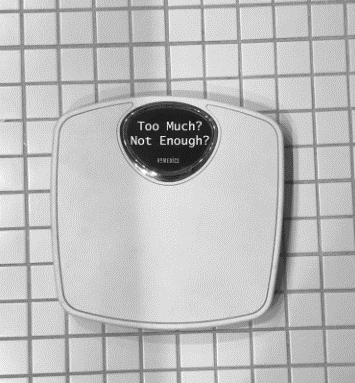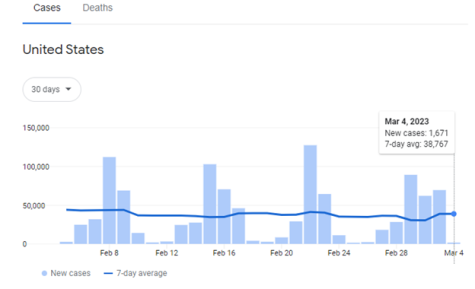Overlooked: men’s eating disorders

Photo courtesy of Christina Nies
“I believe if society were to be less judgemental about one’s weight, then the issue of having an eating disorder may be less prevalent,” said the anonymous student.
Despite primarily being viewed as an issue solely affecting women, eating disorders are just as devastating for men.
“I think that men’s eating disorders, especially in the fitness industry, are a severely overlooked problem that most people do not even think about,” said junior Omari Patterson, an athlete with an interest in the subject.
According to the National Eating Disorders Association (NEDA), approximately a third of people who experience eating disorders are men. While eating disorders within women often coincide with the desire to lose weight and become thin, eating disorders within men are often associated with the desire to gain weight and fit into the muscular male body standard.
“I think today, if you look at Instagram reels and TikTok, it’s a lot of fitness stuff,” said Physical Education teacher Amy Berglund.”You see all these people with ripped abs and then you’re like ‘I want to look like that, why am I not looking like that?’”
The fitness industry is permeated by fitness influencers who simultaneously maintain low body fat percentages and extreme muscularity. For many people, this physique is not attainable without making drastic changes to their eating habits. These changes, such as calorie and macro counting or fasting, are not inherently harmful, but can become obsessive when done to achieve an end goal of a specific physique, weight, or athletic performance.
“[When macro counting], you have to weigh out your food. You’re supposed to get a ratio of carbs to fats to protein,” said Berglund. “But then you also have to reflect, is this a healthy thing to be doing? Because at some point, you can be so obsessed with getting the right grams that it can become harmful.”
This is not to say that men’s eating disorders always stem from wanting to bulk up. Although more common in women, weight-loss-oriented eating disorders such as anorexia nervosa are also experienced by men.
“My experience with an eating disorder mainly occurred after the lockdown where I gained a considerable amount of weight,” said a student who wishes to remain anonymous. “However, rather than going the traditional route of diet and exercise, I went to an extreme route of drastically cutting my portions and portion size which allowed me to lose weight fast, albeit at the additional cost of my overall energy and possibly my lifespan.”
Weight-loss-oriented eating disorders are also commonly experienced in sports. This is especially true in those where a certain weight is considered optimal for athletic performance, such as in wrestling and other sports organized into weight classes.
“There’s this idea for men’s track that lighter is faster,” said Berglund. “And so [in] men’s running, there’s a lot of men who have eating disorders.”
The issue of men’s eating disorders is little discussed due to social stigmas and the widely-held belief that only women suffer from them. Because of this, many men are not aware that they may have an eating disorder or are hesitant to speak about it.
“[Men’s eating disorders] just aren’t talked about very much,” said Berglund. “I feel like men feel like they can’t talk about it as much.”
Despite the challenges that come with eating disorders, they can be triumphed over. There is nothing wrong with having certain physique or athletic goals, but it is pertinent that these goals are achieved by sustainable methods, for the sake of both health and happiness.
“As of now, however, I am back at a healthy weight as I have found confidence in my appearance without worrying about body fat percentage and weight and I prefer it much more than the constant feeling of drowsiness and exhaustion I previously had,” said the anonymous student.
According to Mayo Clinic, anorexia nervosa, bulimia nervosa, binge-eating disorder, rumination disorder, and avoidant/restrictive food intake disorder are some of the most commonly diagnosed eating disorders, with different factors characterizing each.
Anorexia nervosa, known widely as anorexia, is characterized by extremely low body weight and an intense fear of weight gain. Those with this eating disorder often limit caloric intake and resort to extreme exercise in order to lose weight.
Bulimia nervosa (bulimia) and binge-eating disorder both involve binging on large amounts of food within short periods of time and eating past fullness. Unlike binge-eating disorder, bulimia consists of cycles of binging and purging, the latter involving forced vomiting or exercise to be rid of food consumed during a binge.
Although less common, rumination disorder and avoidant/restrictive disorder are just as impactful. Those with rumination disorder regurgitate food that has been swallowed, often unintentionally. Avoidant/restrictive disorder involves fears surrounding the texture and color of food, fears of possible consequences of eating such as choking, or a general disinterest in food. People with these disorders often do not meet their nutritional needs due to the lack of food ingested, which can result in malnutrition or drastic weight loss.
While consisting of different behaviors and motivations, all of these eating disorders share the common quality of being potentially life-threatening. If you believe you may have an eating disorder, a screening tool is available on the NEDA website, which identifies with a few simple questions if you are at risk for or have an eating disorder. The NEDA hotline is also available at (800) 931-2237.



